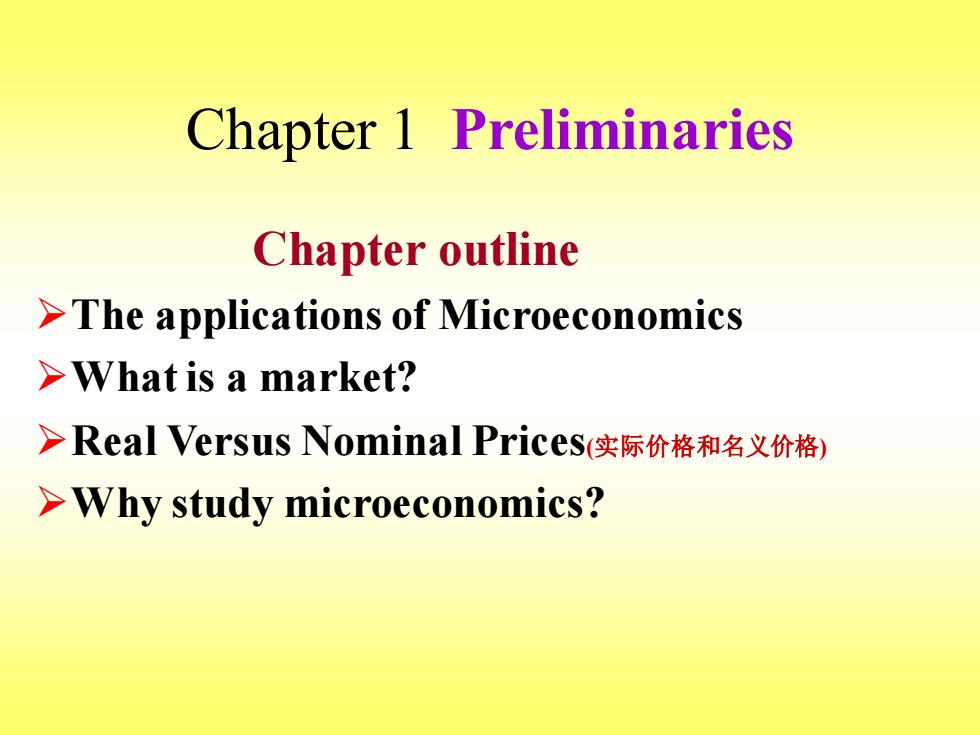
Chapter 1 Preliminaries Chapter outline >The applications of Microeconomics >What is a market? >Real Versus Nominal Prices(实际价格和名义价格) >Why study microeconomics?
Chapter 1 Preliminaries Chapter outline ➢The applications of Microeconomics ➢What is a market? ➢Real Versus Nominal Prices(实际价格和名义价格) ➢Why study microeconomics?

Microeconomics is concerned with the decisions made by small economic units-consumers,workers,investors,owners of resources,and business firms. It is also concerned with the interaction of consumers and firms to form markets and industries
❑ Microeconomics is concerned with the decisions made by small economic units-consumers, workers, investors, owners of resources, and business firms. It is also concerned with the interaction of consumers and firms to form markets and industries
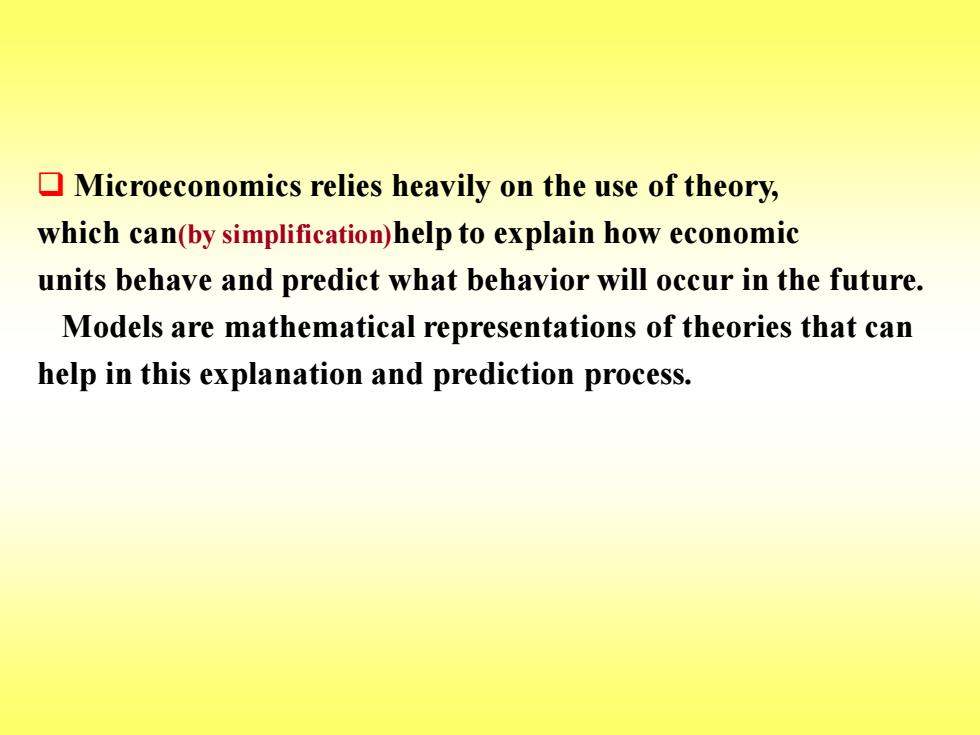
Microeconomics relies heavily on the use of theory, which can(by simplification)help to explain how economic units behave and predict what behavior will occur in the future. Models are mathematical representations of theories that can help in this explanation and prediction process
❑ Microeconomics relies heavily on the use of theory, which can(by simplification)help to explain how economic units behave and predict what behavior will occur in the future. Models are mathematical representations of theories that can help in this explanation and prediction process
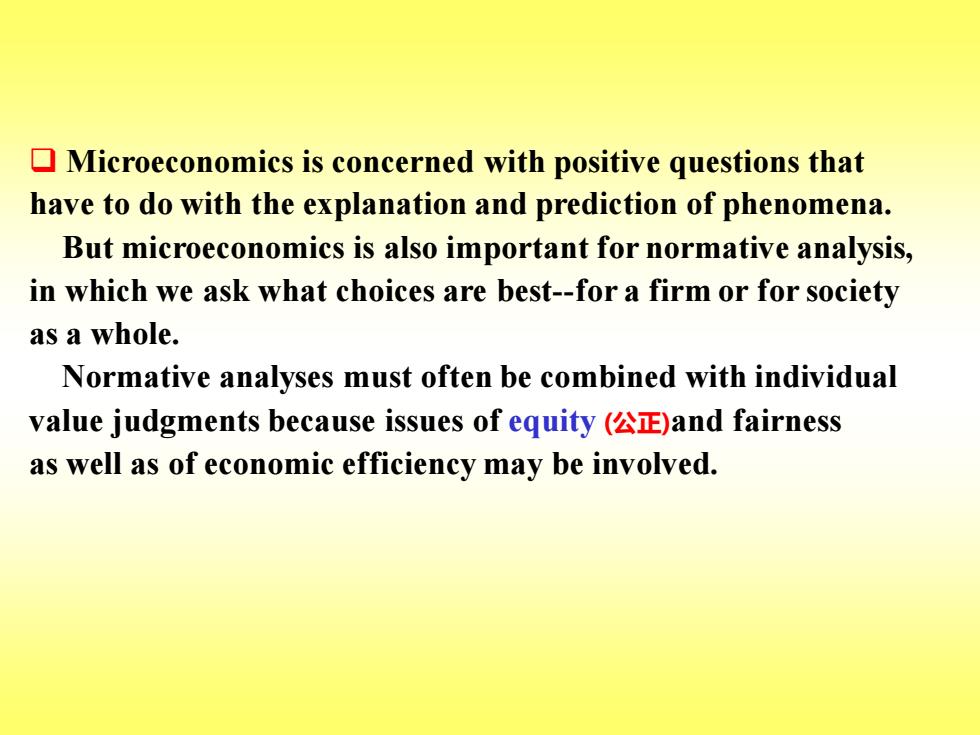
Microeconomics is concerned with positive questions that have to do with the explanation and prediction of phenomena. But microeconomics is also important for normative analysis, in which we ask what choices are best-for a firm or for society as a whole. Normative analyses must often be combined with individual value judgments because issues of equity (E)and fairness as well as of economic efficiency may be involved
❑ Microeconomics is concerned with positive questions that have to do with the explanation and prediction of phenomena. But microeconomics is also important for normative analysis, in which we ask what choices are best-for a firm or for society as a whole. Normative analyses must often be combined with individual value judgments because issues of equity (公正)and fairness as well as of economic efficiency may be involved
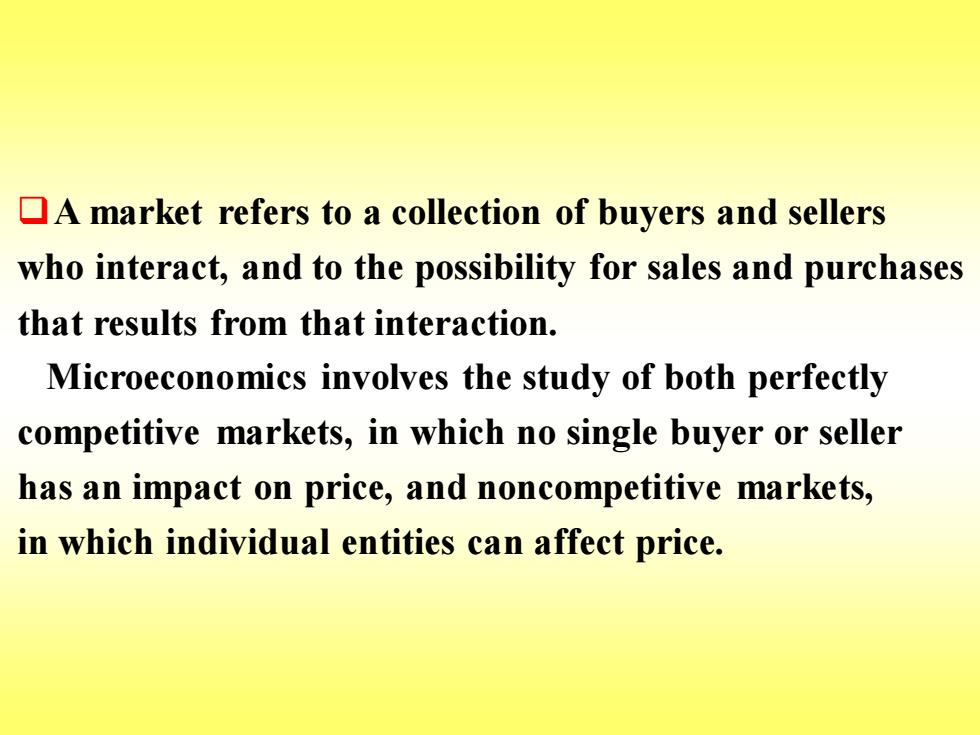
A market refers to a collection of buyers and sellers who interact,and to the possibility for sales and purchases that results from that interaction. Microeconomics involves the study of both perfectly competitive markets,in which no single buyer or seller has an impact on price,and noncompetitive markets, in which individual entities can affect price
❑A market refers to a collection of buyers and sellers who interact, and to the possibility for sales and purchases that results from that interaction. Microeconomics involves the study of both perfectly competitive markets, in which no single buyer or seller has an impact on price, and noncompetitive markets, in which individual entities can affect price

>Macroeconomics-Branch of economics that deals with aggregate economic variables,such as the level and growth rate of national output国民产出),interest rates,.unemployment, and inflation. >Positive analysis-Analysis describing relationships of cause and effect. Normative analysis-Analysis examining questions of what ought to be
➢ Macroeconomics-Branch of economics that deals with aggregate economic variables, such as the level and growth rate of national output(国民产出), interest rates, unemployment, and inflation. ➢ Positive analysis-Analysis describing relationships of cause and effect. ➢ Normative analysis-Analysis examining questions of what ought to be
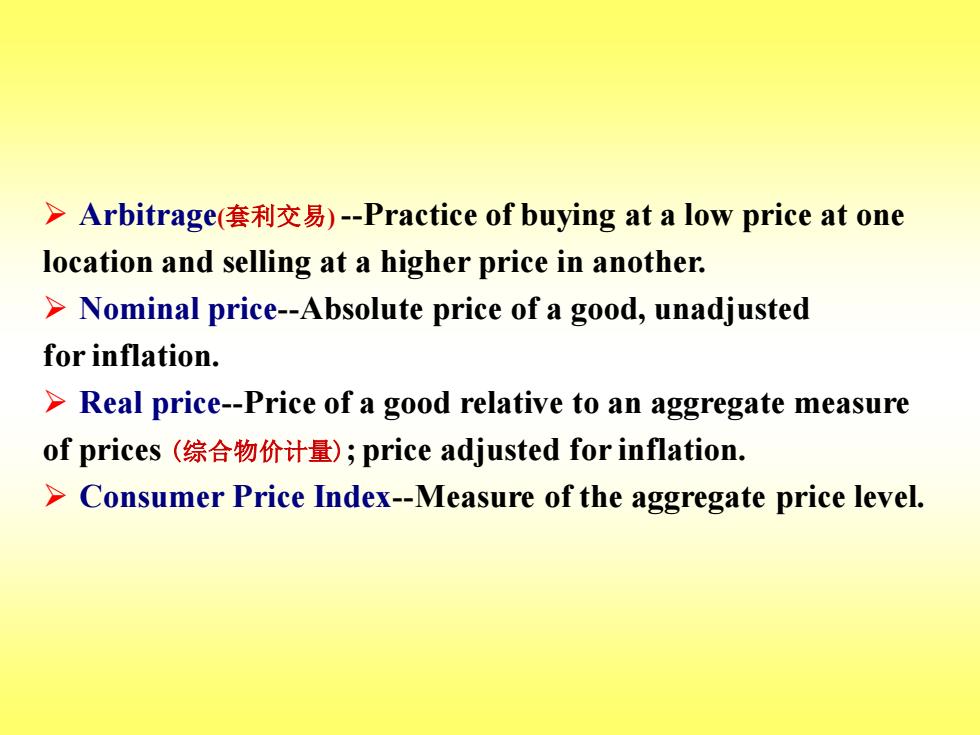
>Arbitrage(套利交易)-Practice of buying at a low price at one location and selling at a higher price in another. Nominal price-Absolute price of a good,unadjusted for inflation. >Real price-Price of a good relative to an aggregate measure of prices(综合物价计量);price adjusted for inflation. >Consumer Price Index-Measure of the aggregate price level
➢ Arbitrage(套利交易) -Practice of buying at a low price at one location and selling at a higher price in another. ➢ Nominal price-Absolute price of a good, unadjusted for inflation. ➢ Real price-Price of a good relative to an aggregate measure of prices (综合物价计量);price adjusted for inflation. ➢ Consumer Price Index-Measure of the aggregate price level

The market price is established by the interaction of buyers and sellers. In a perfectly competitive market,a single price will usually prevail. In markets that are not perfectly competitive,different sellers might charge different prices. In this case,the market price refers to the average prevailing price(现行价格)
❑ The market price is established by the interaction of buyers and sellers. In a perfectly competitive market, a single price will usually prevail. In markets that are not perfectly competitive, different sellers might charge different prices. In this case, the market price refers to the average prevailing price(现行价格)

When discussing a market,we must be clear about its extent in terms of both its geographic boundaries and the range of products(产品范围)to be included in it. Some markets (e.g.,housing)are highly localized,whereas others(e.g.,gold)are global in nature(性质上)
❑ When discussing a market, we must be clear about its extent in terms of both its geographic boundaries and the range of products (产品范围) to be included in it. Some markets (e.g., housing) are highly localized, whereas others (e.g., gold) are global in nature (性质上)
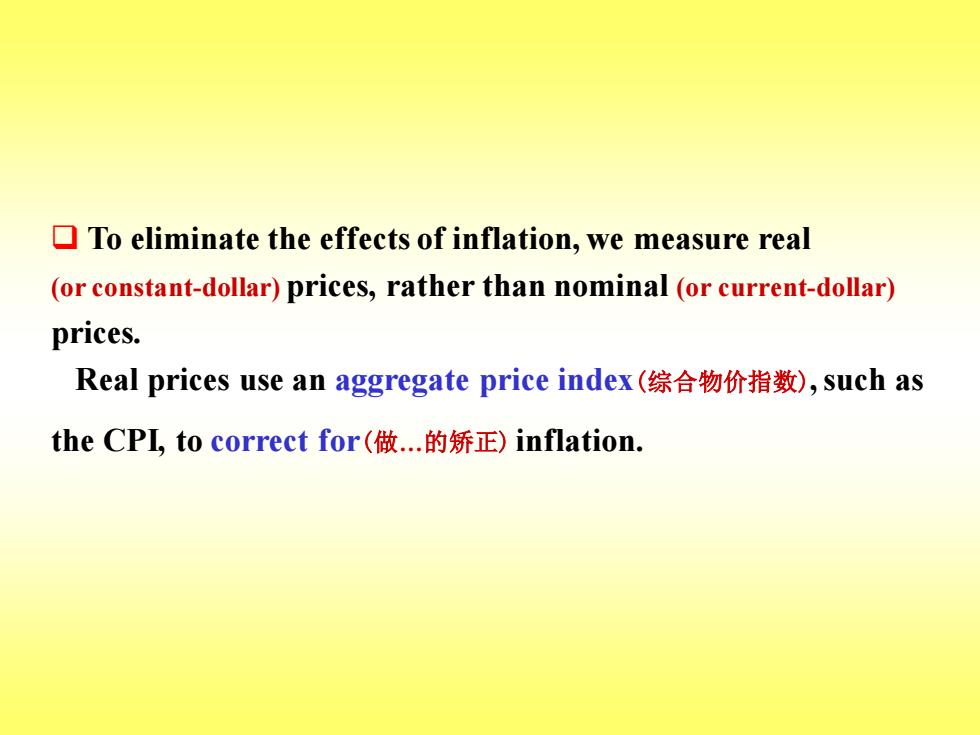
To eliminate the effects of inflation,we measure real (or constant-dollar)prices,rather than nominal (or current-dollar) prices. Real prices use an aggregate price index(综合物价指数),such as the CPI,to correct for(做.的矫正)inflation
❑ To eliminate the effects of inflation, we measure real (or constant-dollar) prices, rather than nominal (or current-dollar) prices. Real prices use an aggregate price index(综合物价指数),such as the CPI, to correct for(做.的矫正) inflation